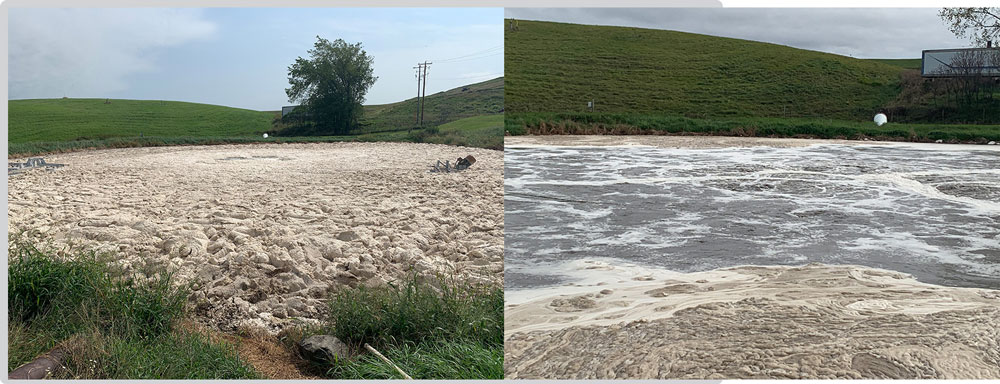
A food processing facility in the Upper Midwest was experiencing an upset due to a breakdown in its process equipment and production changes, which allowed for a high level of fats, oils and greases (FOG) to pass into its waste stream. The additional FOG that was discharged into the aeration basin was not sufficiently removed during the primary treatment. The increased loading to the aeration system put a strain on the active bacteria in the system and decreased treatment efficiency.
The FOG associated with a facility is based on its industry and production processes. One of the most common types is acylglycerols, which are less dense than water. While acylglycerols, or neutral fats, provide energy storage for plants and animals and have a backbone glycerol molecule that connects the fatty acid chains, the most abundant neutral fats are triglycerols (triacylglycerol) with a fatty acid attached to each of the three-hydroxyl group of glycerol. Triglycerols are especially problematic because they are hydrophobic, or insoluble in water, and difficult to break down biologically.
With FOG and other contaminants not being effectively removed at the food processing facility, FOG began to layer in the aeration basin and created a two-foot-thick fat cap. Therefore, the wastewater could not be discharged to the city and was redirected to the user’s holding ponds. If the problem was left untreated, then the user would have continued poor contaminant removal, increased surcharges and extended recovery times of four to eight weeks.
Bioaugmentation is the addition of specific bacteria to stabilize and improve the efficiency of biological treatment systems, including removal of FOG and soluble biochemical oxygen demand (BOD) and other contaminants. Since triacylglycerols are broken down by cleaving the ester linkage between the glycerol backbone and the three fatty acids, cleaving of these ester bonds is required for microbial degradation. The ester bonds can be broken using extreme swings in pH, both very low and very high, or bio-organic catalysts (BOCs) that cleave the linkage effectively separating the glycerol and fatty acids. Once the bond is broken, glycerol is rapidly metabolized by microorganisms in the water, and fatty acid concentrations in the water decrease.
At the user’s facility, a water treatment service company’s application team collected samples and did an onsite micro-examination and additional samples were sent to its in-house laboratory to identify which bacteria were active in the system. Since the aeration basin had become overloaded and biodeficient, the company recommended a bioaugmentation program to assist in removing the FOG in the system, which included blended microbial supplements to provide the much-needed micronutrients and specific bacteria designed to stabilize the system.
The facility was able to continue normal operations while working on improving the aeration basin capabilities by removing the FOG cap with bioaugmentation over twelve weeks. Long-term results are focused on avoiding any future upsets. This application was a one-time application, so no additional testing or dosing was needed to maintain the system outside of what the facility currently does.

Patience is key to any bioaugmentation program. So, a dosing schedule was set up over an extended period for the bacteria as well as scheduled follow up micro-examinations that indicated the improving health of the bacterial population. Micro-examinations typically provide an early indication of microorganisms’ growth before the stark visual difference that took almost three months to realize at the food processing plant.
The water treatment company went back upstream to help the facility mitigate the FOG loading as well as improve the dissolved air flotation (DAF) efficiency so that a lower FOG loading was being sent to the aeration basin. Selecting a combination of patented microorganisms adapted for application to food processing wastewater containing FOG improved the reduction of the FOG in the aeration basin, resulting in better performance and removal of the fat cap.

